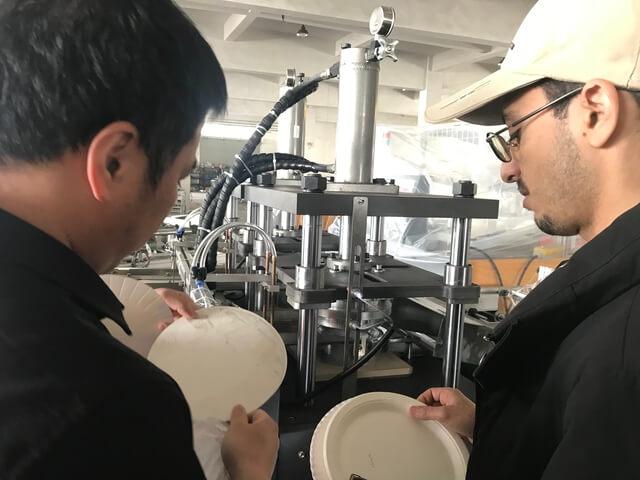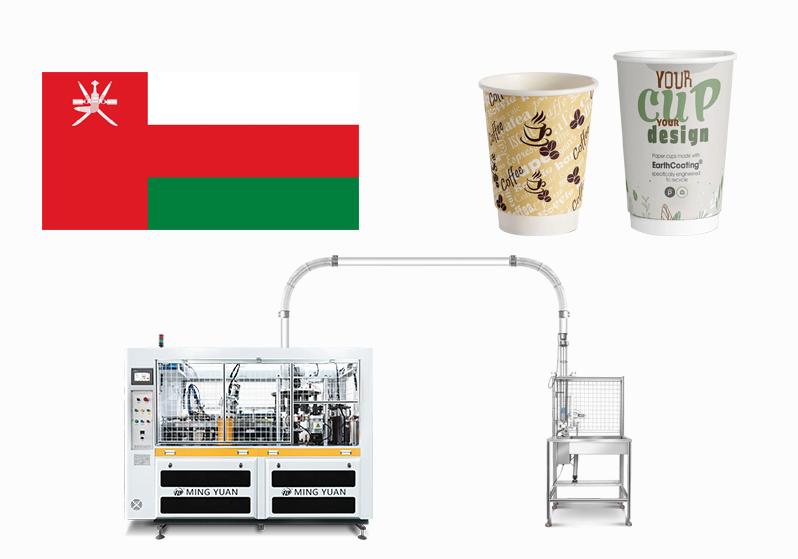Measuring the grammage (GSM) of paper cups produced by coffee paper cup machines is crucial for manufacturers in ensuring product quality and consistency. Grammage refers to the weight of paper per unit area, typically measured in grams per square meter. A precise measurement helps in determining the right material thickness for various applications, thereby impacting the strength, durability, and overall performance of the cups. This article will guide you through simple methods to measure the GSM of paper cups effectively.
Understanding Grammage (GSM)
Grammage, or grams per square meter, is a critical parameter in the paper industry. It signifies the weight of a specific area of paper, which directly correlates with its thickness and sturdiness. For coffee paper cup machines, the GSM is essential as it affects insulation properties, structural integrity, and the ability to hold liquids without leaking. A higher GSM generally indicates a thicker, more durable cup, while a lower GSM may suggest a lighter, less robust product.
Tools Required for Measuring GSM
To accurately measure the GSM of coffee paper cup machines, certain tools are necessary. The primary instruments include a precision scale and a ruler or caliper. A digital scale allows for accurate weight measurements, while a ruler or caliper can help determine the dimensions of the paper cup. Additionally, a cutting tool to create samples may be required, depending on the measuring method employed.
Method 1: Using a Sample Area
This method involves creating a sample of the paper used to make the cups. Here’s how to do it:
1. Cut a rectangular sample from the coffee paper cup machines. A common size is 100 cm², but you can adjust this based on your needs.
2. Weigh the cut sample using the precision scale. Ensure that the scale is calibrated for accurate readings.
3. Calculate the GSM using the formula: GSM = (Weight of the Sample in grams / Area of the Sample in square meters). For example, if your sample weighs 12 grams and covers an area of 0.01 square meters (100 cm²), the GSM would be 1200 g/m².
Method 2: Direct Measurement of Finished Cups
If you want to measure the GSM of finished cups directly, follow these steps:
1. Choose several cups of the same type and size for consistency.
2. Weigh each cup individually and record the weights.
3. Measure the surface area of the cups. For standard cups, calculate the surface area using the formula for the lateral surface area of a cylinder: A = 2πrh + 2πr² where r is the radius and h is the height.
4. Use the total weight and total surface area to find the average GSM: GSM = (Total Weight in grams / Total Surface Area in square meters).
Factors Affecting GSM Measurements
Several factors can influence the accuracy of your GSM measurements. First, variations in the manufacturing process can lead to inconsistencies in paper thickness. Moreover, humidity and temperature can affect the weight of the paper, as moisture absorption may increase the weight, skewing results. To minimize errors, ensure that you conduct measurements in a controlled environment and use samples from the same production batch.
Interpreting GSM Results
Once you have calculated the GSM of your coffee paper cup machines, it’s important to interpret the results effectively. Generally, a GSM range of 180 to 300 is suitable for most disposable paper cups. Cups at the lower end of this range are often used for cold beverages, while those at the higher end are better suited for hot drinks. Understanding these ranges will help you determine if adjustments to the manufacturing process are necessary to meet product specifications.
Quality Control Considerations
Implementing GSM measurement as part of your quality control processes can significantly enhance product reliability. Regularly testing GSM during production runs allows manufacturers to identify fluctuations early and maintain consistent quality. Establish a routine for measuring GSM, and document results for ongoing analysis. This practice not only ensures customer satisfaction but also aids in compliance with industry standards.
Conclusion
Measuring the grammage of coffee paper cup machines is a straightforward but essential process that promotes quality assurance in manufacturing. By utilizing simple tools and established methods, manufacturers can ensure their products meet the necessary standards for performance and durability. Regular GSM checks help maintain consistency and improve customer satisfaction. As the demand for eco-friendly and reliable paper products continues to rise, understanding and measuring GSM will remain a key factor in the success of paper cup production.
















 Tel: +86-19057361870 / +86 577 65567060
Tel: +86-19057361870 / +86 577 65567060  Email: george@paper-cupmakingmachine.com
Email: george@paper-cupmakingmachine.com MP/WhatsApp: +86-19057361870
MP/WhatsApp: +86-19057361870 Manufacturer Address:No.1588, Huaming Road, Feiyun Street,Ruian City Zhejiang Province -325200 China
Manufacturer Address:No.1588, Huaming Road, Feiyun Street,Ruian City Zhejiang Province -325200 China




